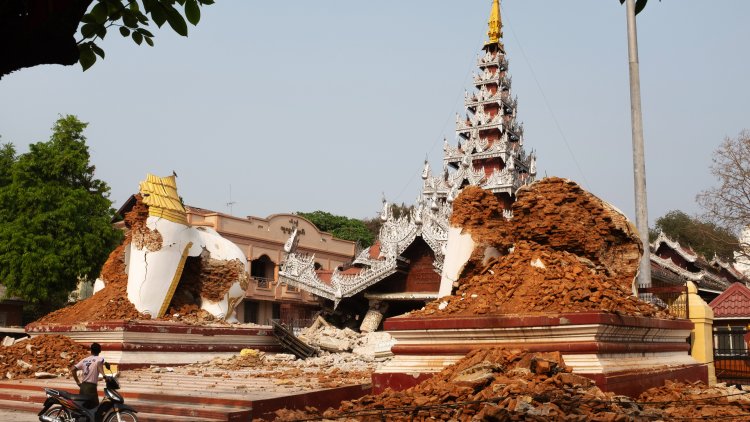Myanmar experiences aftershocks after magnitude-7.7 earthquake
Aftershocks continue to shake Myanmar in the aftermath of a magnitude-7 earthquake.

"This earthquake occurred along the Sagaing Fault in Myanmar, which marks the eastern edge of the Burmese Arc," explained Jiang Haikun, a researcher at the China Earthquake Networks Center.
The earthquake was a result of the intense collision between the Indian Plate and the Eurasian Plate, which led to significant shortening of the lithosphere and the formation of the Himalayan orogenic belt. The Burmese Arc, situated at the eastern tectonic junction of this region, suffers from substantial crustal deformation and is characterized by strong seismic activity. It has formed a series of north-south-trending tectonic units and faults, making it one of the most seismically active parts of the Himalayan seismic belt.
"The Sagaing Fault is over 1,400 kilometers long with an average movement rate of 20 millimeters per year. The fault is highly seismically active, especially in its middle and northern sections," Jiang noted.
He further mentioned that this quake took place in the southern section of the fault, where significant historical earthquakes have not been recorded. Nevertheless, the surrounding region has seen a relatively frequent occurrence of strong earthquakes, with ten events of magnitude 7 or higher noted since 1900. "This earthquake featured a southward rupture process," Jiang added.
"This earthquake was a typical shallow-focus event occurring within the Earth's crust, with its rupture plane potentially reaching the surface, causing intense ground shaking. The region surrounding the fault is densely populated in Myanmar, and the collapse of numerous buildings has posed a severe challenge for emergency rescue efforts," said Gao Mengtan, an expert from the Institute of Geophysics at the China Earthquake Administration.
Gao further commented that, thus far this year, global seismic activity has been lower when compared to previous years. As it stands, it is difficult to determine if the Earth is entering an active seismic phase following this earthquake.
Preliminary parameters suggest that the quake has the potential to trigger a local tsunami near the epicenter. However, China's Ministry of Natural Resources stated that the epicenter is located outside the Pacific Ocean, meaning there would be no impact on the coastal areas of China.
This earthquake marks the 17th global earthquake of magnitude 6 or higher this year, and it stands out as the largest earthquake to occur so far this year, as well as the strongest continental earthquake in nearly a decade, according to China Media Group.
On Saturday, a team of 37 Chinese rescue and medical personnel arrived in Yangon, Myanmar's largest city, to engage in international humanitarian relief efforts.
Camille Lefevre contributed to this article for TROIB News
Discover more Science and Technology news updates in TROIB Sci-Tech












